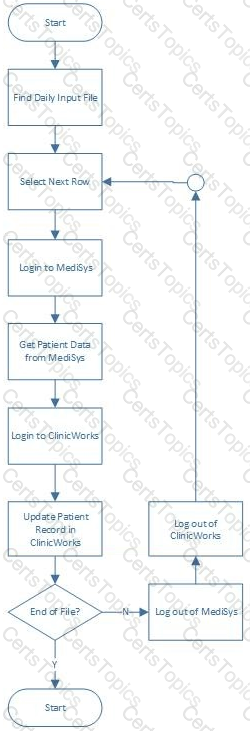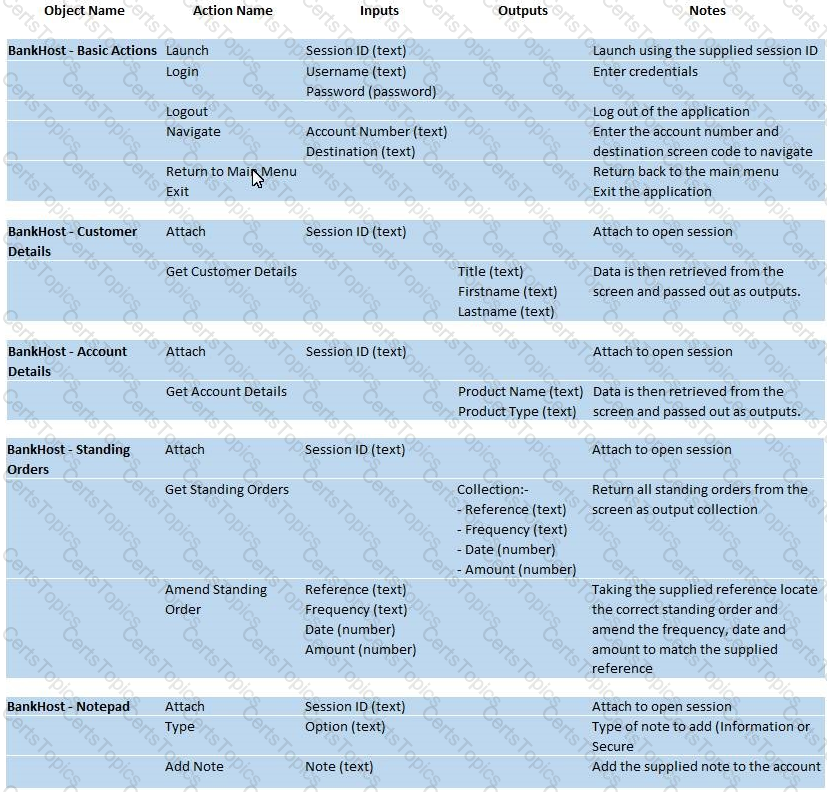Which of the following statements about using Work Queue designs to split a business process into a multi part robotic solution is correct?
1. Using multiple Work Queues and Processes for the different stages of the business process is a valid design option to split a business process into a multi partrobotic solution.
2. Using a single Work Queue and deferring cases for future processing is a valid design option to split a business process into a multi part robotic solution.
3. Using an item’s status to control when to work it is a valid design optionto split a business process into a multi part robotic solution.
4. You cannot split a business process into a multi part robotic solution.
Consider the following high-level design. Thesolution is intended to read medical data from one application in order to update another. An input file is prepared by an overnight batch run for the solution to work through each morning before patients arrive. Usually the input file is fairly small butat certain times each month the file is much larger.

Which of these options should be considered be the process solution designer to guarantee the quality of the end-to-end solution? (Choose four.)
Which of the following statement combinations about Blue Prism memory management is correct?
Which of the following accurately describes best practice when work is sourced from an application’s workflow system?
The following Object Design has been created for a mainframe banking application.

Which of the following statements about the Object design above are correct? (Choose two.)
If a solution is to make use of a queue with Maximum Attempts greater than 1, what should the designer put in place? (Choose two.)
Which of the following statements about Blue Prism and Web Services is correct?
Consider the following steps for a theoretical manual process.
If the volume of incoming cases is such that 1 Resource PC can easily handle the workload, which of the following steps for an automated solution should be part of the ‘Preparation’ phase of an automated process?